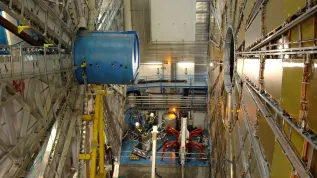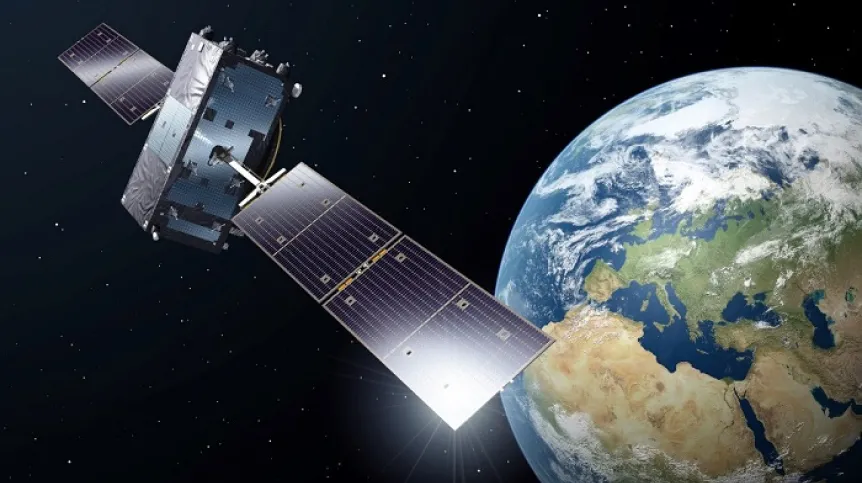
Einstein correctly predicted changes in the shape of the orbits of objects orbiting the Earth, confirm by the observations of the trajectories of the navigation satellites carried out by scientists from the Wrocław University of Environmental and Life Sciences and the European Space Agency (ESA).
Einstein correctly predicted changes in the shape of the orbits of objects orbiting the Earth, confirm by the observations of the trajectories of the navigation satellites carried out by scientists from the Wrocław University of Environmental and Life Sciences and the European Space Agency (ESA).
The researchers' conclusions are based on the results of three years of continuous observations from more than 100 stations on all continents, tracking approx. 80 satellites of the GPS, GLONASS and Galileo systems, report the representatives of the Institute of Geodesy and Geoinformatics, Wrocław University of Environmental and Life Sciences.
Einstein's General Theory of Relativity (GR) was previously proven with atomic clocks installed on satellites. However, until now no one confirmed the changes in the size and shape of the orbits of the Earth's satellites, predicted by GR. The latest research by scientists from the Institute of Geodesy and Geoinformatics and ESA confirms the possibility of direct measurement of not only time dilation, but also space-time geometry deformation. It also confirms changes in the shape of the orbits of the GPS, GLONASS and Galileo navigation satellites, in particular the pair of Galileo satellites that were accidentally put in eccentric orbits.
Research team leader and space surveyor Professor Krzysztof Sośnica explains that General Relativity was confirmed with a very high level of reliability on the basis of the change in the passage of time recorded by atomic clocks. But in addition to changes in the passage of time, GR predicts slight deformations of the shape and size of the orbits of the Earth's satellites. The changes in the geometry of space-time, and thus the orbits of artificial satellites, are so small that so far no one has been able to measure them - until the latest observation results.
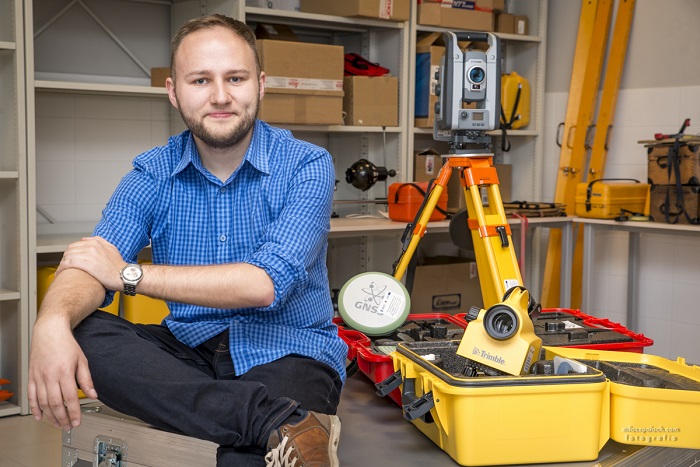
ESA funded a research project to validate GR. Galileo, GPS and GLONASS navigation satellites were used for this purpose. Why these satellites? Navigation satellites are monitored without interruption by GNSS stations on all continents. In addition, they transmit signals at several frequencies and integrate laser and microwave technology on board. Scientists from the Institute of Geodesy and Geoinformatics have developed satellite models that allow to determine their orbits with extreme precision and predict where their future positions.
Sośnica said: “As a result, we are able to determine the position of navigation satellites with a few to several millimetres accuracy and predict the position of the satellites after one day with an accuracy of several dozen centimetres. Remember that satellites are constantly moving at a speed of several kilometres per second!”
He added that the first pair of operational Galileo satellites was launched by a Soyuz launcher into the wrong orbit: eccentric instead of a circular one. The satellites orbit at an altitude ranging from 17,180 km to 26,020 km, rather than a constant altitude of 23,225 km.
He said: “ESA decided to use these satellites for research that was not possible before: to study the effects of GR, which, as we already know, vary depending on the satellite's altitude.”
Scientists from the Institute of Geodesy and Geoinformatics started their research by deriving theoretical effects from GR. It turned out that, according to GR, the shape and size of the orbits of satellites must change and the greatest changes should affect satellites in eccentric orbits.
The next step was to confirm theoretical predictions using real satellite data. For this purpose, the scientists used three years of continuous observation of GPS, GLONASS and Galileo satellites, a network of over 100 GNSS stations on all continents and approx. 80 active satellites.
The scientists processed satellite observations in three scenarios. In the first scenario, they assumed that Newton's theory of satellite motion was correct and corrections resulting from Einstein's theory of general relativity did not need to be applied. In the second scenario, they assumed the correctness of GR, taking into account the corrections for satellite motion resulting from it. In the third scenario, they assumed that GR was correct, but Einstein was wrong about the curvature value and space-time non-linearity.
Sośnica said: “This scenario allows the GPS, GLONASS and Galileo satellites to find the optimal value of the curvature and space-time non-linearity. In other words, satellites can move freely, and the only thing that limits them are the distance measurements carried out by ground stations.
“It turns out that even when we allow satellites to move freely, they still confirm the correctness of Einstein's theory. For the first time, it was possible to prove, by observing changes in the size and shape of the orbits of artificial satellites, that space-time is curved and non-linear just as Einstein predicted more than 100 years ago, and that curved space-time changes the movement of the satellites.”
The size of the orbit (its semi-major axis) changes by -28.3 mm when a Galileo satellite is in the perigee (the point of least distance to Earth) and by -7.8 mm, when a Galileo satellite in eccentric orbit is in the apogee (the greatest distance). For circular orbits, the change will be approx. -17.4 mm. The average effect would be -17.7 mm, if only the mass of the Earth was taken into account, but after taking into account the mass of the Sun and the Earth's rotation, the total relativistic effect is on average -17.4 mm. Changes in the size of the orbit depend on whether orbit is approximately circular or eccentric.
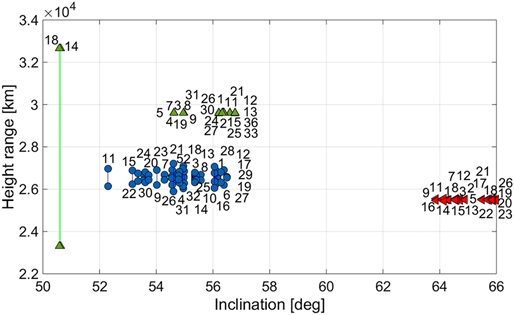
Figure 3 presents the differences in the size of orbits for a satellite in a circular orbit (Galileo E30) and a satellite in an eccentric orbit (Galileo E18). The blue points correspond to orbit differences every 15 min. Upper drawings show differences assuming the correctness of General Relativity (Scenario 2-Scenario 1), while on the lower drawing presents the solution, in which free movement of satellites is allowed, i.e. satellites can find their optimal value of curvature and time-space non-linearity (Scenario 3-Scenario 1). If Einstein's theory of General Relativity was incorrect, all points should oscillate around zero, in particular in the lower drawings that allow any movement of satellites. However, this is not the case, the values do not oscillate around zero, which confirms that the satellites move approximately as predicted by GR.
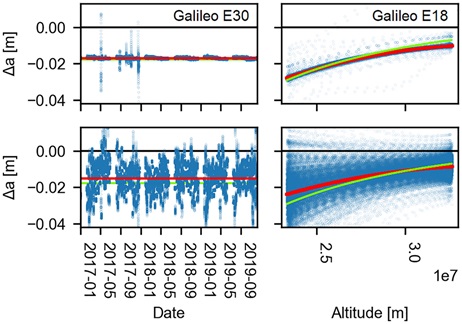
Despite the fact that Einstein did not live to see the launch of an artificial satellite, because he died two years before the launch of Sputnik 1 elevation to orbit a sputter-1, he was the first to describe exactly how satellites would move. Only now, using the latest achievements and accuracy offered by navigational systems in the 21st century, scientists are able to confirm that he was right.
In the case of Galileo satellites in eccentric orbits, GR changes the shape and size of orbit in the perigee in such a way that the orbit becomes smaller but more circular. In the apogee, the semi-major axis decreases, but eccentricity increases, and therefore the orbit becomes more eccentric. Therefore, the orbit variability for eccentric orbits is largely compensated by changes in the orbit shape, and therefore the total satellite altitude change effect is much smaller than the effect on the size and shape of orbit individually.
Interestingly, changes in the shape of the orbits resulting from GR do not depend on the orbit eccentricity (unlike in the case of the orbit size). An approximately circular orbit changes its shape similarly to an eccentric orbit. This is a fairly non-obvious phenomenon that predicted by GR that has never been directly measured by other scientists. Only the observations of 80 GPS, GLONASS and Galileo satellites allowed you to confirm this fact.
The researchers confirmed the effects resulting from General Relativity with a relative error of 0.36% after analysing 3 years from the period when satellite data was the most accurate. This was possible in the a solution that allowed free movement of satellites, the one allowing each satellite used in the calculations to find its optimal value of curvature and non-linearity. In case of assumption that the curvature and non-linearity of space-time do not change, the compliance value would be even greater. Thus, it can be concluded that in the most pessimistic scenario, Einstein was right with 99.64% probability.
More on this subject in the paper published in the January 2022 issue of GPS Solutions.
PAP - Science in Poland
kol/ zan/ kap/
tr. RL


